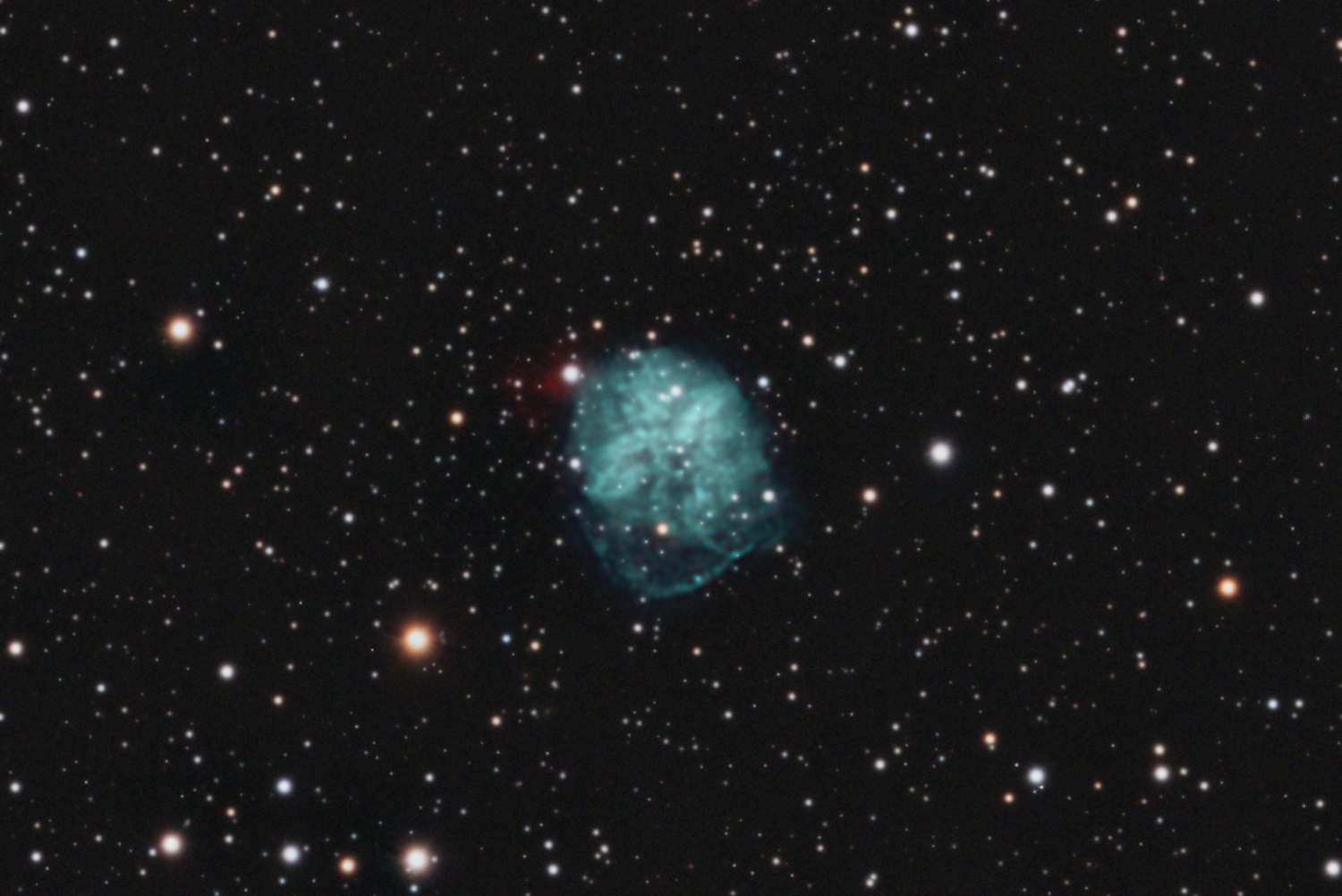Observation by Peter Goodhew FRAS: K2-1
Uploaded by
Peter Goodhew FRAS
Observer
Peter Goodhew FRAS
Observed
2022 Feb 23 - 15:55
Uploaded
2022 Feb 23 - 16:00
Planetarium overlay
Constellation
Auriga
Field centre
RA: 05h07m
Dec: +30°49'
Position angle: -10°03'
Field size
0°18' × 0°12'
Equipment
- APM TMB LZOS 152 Refractors
- QSI6120 CCD Cameras
- 10Micron GM2000 HPS mount
Exposure
37 hours HaOIIIRGB
Location
Fregenal de la Sierra, Spain
Target name
K2-1
Title
K2-1
About this image
K2-1
A very faint and obscure planetary nebula some 3700 light years away in the constellation Auriga.
Initially catalogued as a planetary nebula, was later thought to be misclassified and considered to be either a reflection nebula (LBN 809), an H-II region, and even a galaxy (PGC 16765). However it has recently been rediscovered as a genuine planetary nebula. It has a size of 115x126 arc seconds and is predominantly OIII. The weaker Ha signal has a similar form to the OIII signal. However there's an odd small area of red nebulosity at the top left-hand corner. This is possibly some NII emission which would be captured by the 5nm bandwith of my Ha filter (the spectrum shows that NII is present).
Discovered by Czech astronomer Dr. Luboš Kohoutek in 1962 by visually examining the National Geographic Society-Palomar Observatory Sky Survey prints at the Astronomical Institute in Prague, Czech Republic (https://ui.adsabs.harvard.edu/abs/1963BAICz..14...70K/abstract).
It has a mean surface brightness of 24.1 mag/arc sec.
Image captured on my remote dual rig at Fregenal de la Sierra in Spain between 19-23 February 2022.
More details at https://www.imagingdeepspace.com/k2-1.html
Files associated with this observation
Like this image
Copyright of all images and other observations submitted to the BAA remains with the owner of the work.
Reproduction of work by third parties is expressly forbidden without the consent of the copyright
holder. By submitting images to this online gallery, you grant the BAA permission to reproduce them in
any
of our publications.


